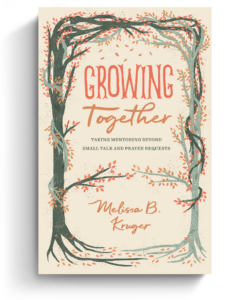Many parents and educators want to give children a lifelong love for great hymns. Maybe you attend a hymn-singing church—or perhaps you miss this experience and wish to reintroduce the richness and beauty of the church’s classic songs. But you aren’t a professional musician or a music teacher. Now what?
Just like any education, learning hymns starts by making purposeful choices. If you make these eight choices, we believe the children in your care will learn to appreciate hymns.
1. Add hymns to your passive-listening playlist.
Passive listening occurs as you listen to music in the background while doing something else. Learn to recapture the moments spent doing chores or homework. Some of us still use CDs (and our retro friends use records), but most stream music. Try this hymn playlist on Spotify or search YouTube for “traditional hymns.”
2. Make active listening a regular part of family activities.
From time to time, bring hymns from the background to the foreground. In other words, stop doing other things and concentrate on the songs—enjoy active listening.
From time to time, bring hymns from the background to the foreground.
Try this on family trips where you have a captive audience for long stretches of time, or on the way to church. Listen to hymns as part of your family devotional time. Ask everyone to vote for their favorite version. Ask them to discuss which rendition best communicates the text to them and why. Name the instruments being played. Keep a basket of goodies from the dollar store to reward answers and discussion.
3. Play an ‘alphabet game’ of hymns while traveling.
We loved this game when our kids were younger. Work through the alphabet and sing hymns that begin with each letter. Starting is easy (everyone remembers “Amazing Grace” for A), but you’ll be challenged by later letters. Be flexible enough to start with the second or third word of the title and, if the game stalls toward the end, don’t forget about “O Zion Haste.”
4. Make hymns a vital part of family worship.
In his helpful book Family Worship, Don Whitney suggests a simple formula for family worship: “Only three syllables to remember—read, pray, sing! You won’t need to prepare anything beforehand. Just read, pray, and sing.” Try to have a hymnal for each member of the family. Like a personal Bible, a hymnal will be something each child treasures through the years. You may start slowly, but keep at it! Before long, hymn singing will become as normal as praying before each meal.
5. Discuss the history of the hymn.
In the hymnal we compiled, Our Hymns, Our Heritage: A Student Guide to Songs of the Church (Moody, 2022), we included background details about each hymn. Note the dates and countries of the author and composer. Do any of your family birthdays or milestones fall on those dates? If possible, relate the hymn story to your family’s knowledge of that period in world history. Sometimes the beauty of a hymn is unlocked by knowing who wrote it and why.
6. Explain any words that might confuse.
Don’t be alarmed when you encounter lyrical expressions like “Ebenezer,” “unction,” or “wretch.” Instead of modernizing classic texts, explain obscure words and increase your child’s vocabulary. When singing “Here I raise my Ebenezer; hither by thy help I’m come” (from “Come Thou Fount of Every Blessing”), explain the reference in 1 Samuel 7:12. Never underestimate the power of connecting songs with particular Scripture passages. Your kids may not understand the connections immediately, but they will before long.
7. Sing familiar hymns without accompaniment (a cappella).
If no one in your family plays piano or guitar, sing anyway, and sing fearlessly—without accompaniment! If you’re feeling a cold sweat running down your spine, consider other options, like the piano accompaniments we’ve recorded as MP3 files, available on a USB flash drive. We have also created hymn resources for download at Hosanna Hymnals.
8. Choose a “hymn of the month.”
If you’re part of a Christian school or homeschool co-op, feature a hymn in chapel gatherings or classroom devotions. Repetition is often the best teacher—sing the chosen hymn several times a week. At the end of the school year, review the nine monthly hymns by singing them all through.
Martin Luther remarked that “next to the Word of God, the noble art of music is the greatest treasure in the world. It controls our thoughts, minds, hearts, and spirits.” So buy your children a hymnal. Join them in learning and singing great hymns. Give them the gift of placing these truths deep in their hearts. As they learn to love the hymns, they will pass them on to the next generation too.
Involved in Women’s Ministry? Add This to Your Discipleship Toolkit
 We need one another. Yet we don’t always know how to develop deep relationships to help us grow in the Christian life. Younger believers benefit from the guidance and wisdom of more mature saints as their faith deepens. But too often, potential mentors lack clarity and training on how to engage in discipling those they can influence.
We need one another. Yet we don’t always know how to develop deep relationships to help us grow in the Christian life. Younger believers benefit from the guidance and wisdom of more mature saints as their faith deepens. But too often, potential mentors lack clarity and training on how to engage in discipling those they can influence.
Whether you’re longing to find a spiritual mentor or hoping to serve as a guide for someone else, we have a FREE resource to encourage and equip you. In Growing Together: Taking Mentoring Beyond Small Talk and Prayer Requests, Melissa Kruger, TGC’s vice president of discipleship programming, offers encouraging lessons to guide conversations that promote spiritual growth in both the mentee and mentor.




























